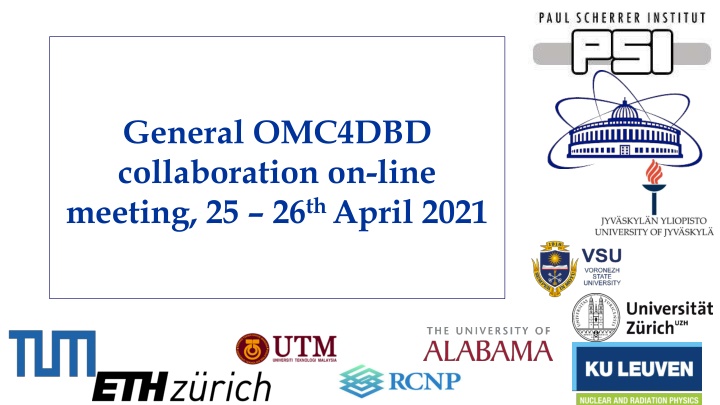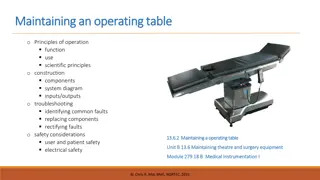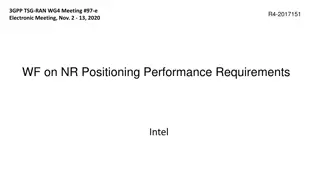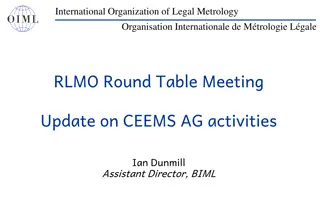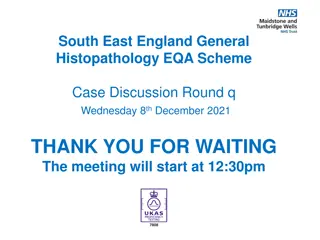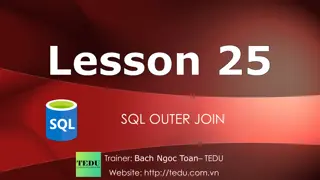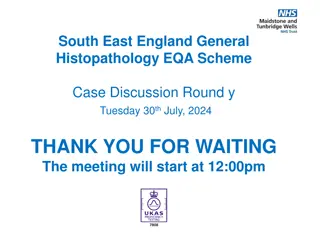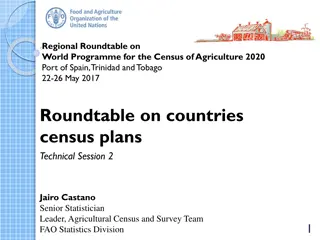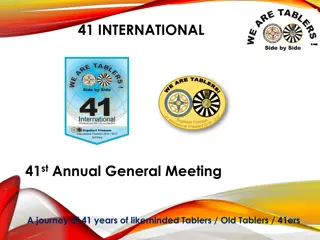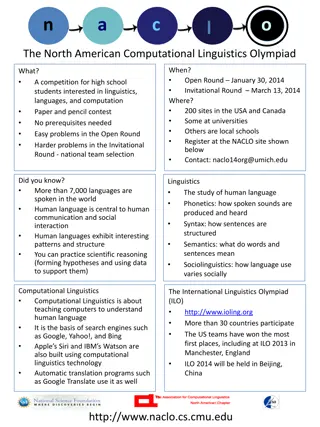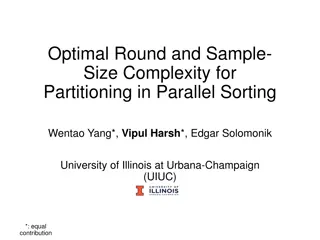General OMC4DBD Collaboration Online Meeting - Round Table Q&A
This content discusses a range of topics covered during the General OMC4DBD Collaboration Online Meeting on 25th and 26th April 2021. It includes details on round table Q&A sessions, astrophysics discussions, beam schedules for 2022, and questions from TUM and JINR groups related to calculations and experiments in various fields. The content is rich in scientific information regarding neutrino matter oscillation, nuclear fusion reactions, supernovae studies, and more.
Download Presentation

Please find below an Image/Link to download the presentation.
The content on the website is provided AS IS for your information and personal use only. It may not be sold, licensed, or shared on other websites without obtaining consent from the author.If you encounter any issues during the download, it is possible that the publisher has removed the file from their server.
You are allowed to download the files provided on this website for personal or commercial use, subject to the condition that they are used lawfully. All files are the property of their respective owners.
The content on the website is provided AS IS for your information and personal use only. It may not be sold, licensed, or shared on other websites without obtaining consent from the author.
E N D
Presentation Transcript
General OMC4DBD collaboration on-line meeting, 25 26th April 2021 1
Round table Q&A Daniya Zinatulina , 26.04.2022 2
E1-2 beam-line (PSI) Beam momentum -> 15 40 MeV/C Muon flux -> 2 x 103 6 x 104s-1 Daniya Zinatulina , 26.04.2022 3
Astrophysics with 100Mo (H. Ejiri talk in detail) Astro neutrino (including solar and supernovae neutrino study) observation provides evidences for neutrino matter oscillation, nuclear fusion reaction in sun and as tools for probing the supernovae (SN) explosion process It was proposed to measure SN antineutrinos on 100Mo (MOON) [1, 2] OMC in 100Mo will give experimental input for theoretical calculations of this process 100MeV 100Mo( e, e+)100Nb (SN) e+ 100Mo( -, e+)100Nb (OMC) e [1] H.Ejiri, J.Suhonen, K.Zuber. // Phys. Rep 797 (2019) 1 102 100Nb [2] H.Ejiri, J.Engel, N. Kudomi // PLB 530 (2002) 27-32 100Mo Daniya Zinatulina , 26.04.2022 4
Beam Schedule 2022 (OMC: 22thSeptember 9th October ) Daniya Zinatulina , 26.04.2022 5
Questions and answers: Questions from TUM group: Why does 2vbb reach 1+ states only and is low-momentum (few MeV), while 0vbb (and OMC) reaches higher Jpi multipoles and a momentum of around 100 MeV? Mentioned in arXiv:1803.10960v3 and M. Kortelainen and J. Suhonen 2002 EPL 58 666. It would be also nice to clarify what is needed for the calculations from us and with what precision; meaning what is still needed to start performing calculation and how can we facilitate that to start the calculations as soon as possible? Which nuclear matrix elements models are the ones you are focussing on for the calculation of the isotopes we are studying and what are the reason for that selection? Daniya Zinatulina , 26.04.2022 6
Questions and answers: Questions from JINR group: While 0vbb (and OMC) reaches higher Jpi multipoles and a momentum of around 100 MeV, is it possible to calculate the maximum expected value of the Jpi excitation? How can OMC experimental results also help with ab-initio calculations? Is it possible to make meeting in person with Juoni and Lotta to spend more time with understanding of calculations? Can the OMC results also cover other fields (not only 0vbb and astrophysics) of the theory calculations? What do you need for this, we can try to measure Daniya Zinatulina , 26.04.2022 7
Questions and answers: Questions from other members: Daniya Zinatulina , 26.04.2022 8
